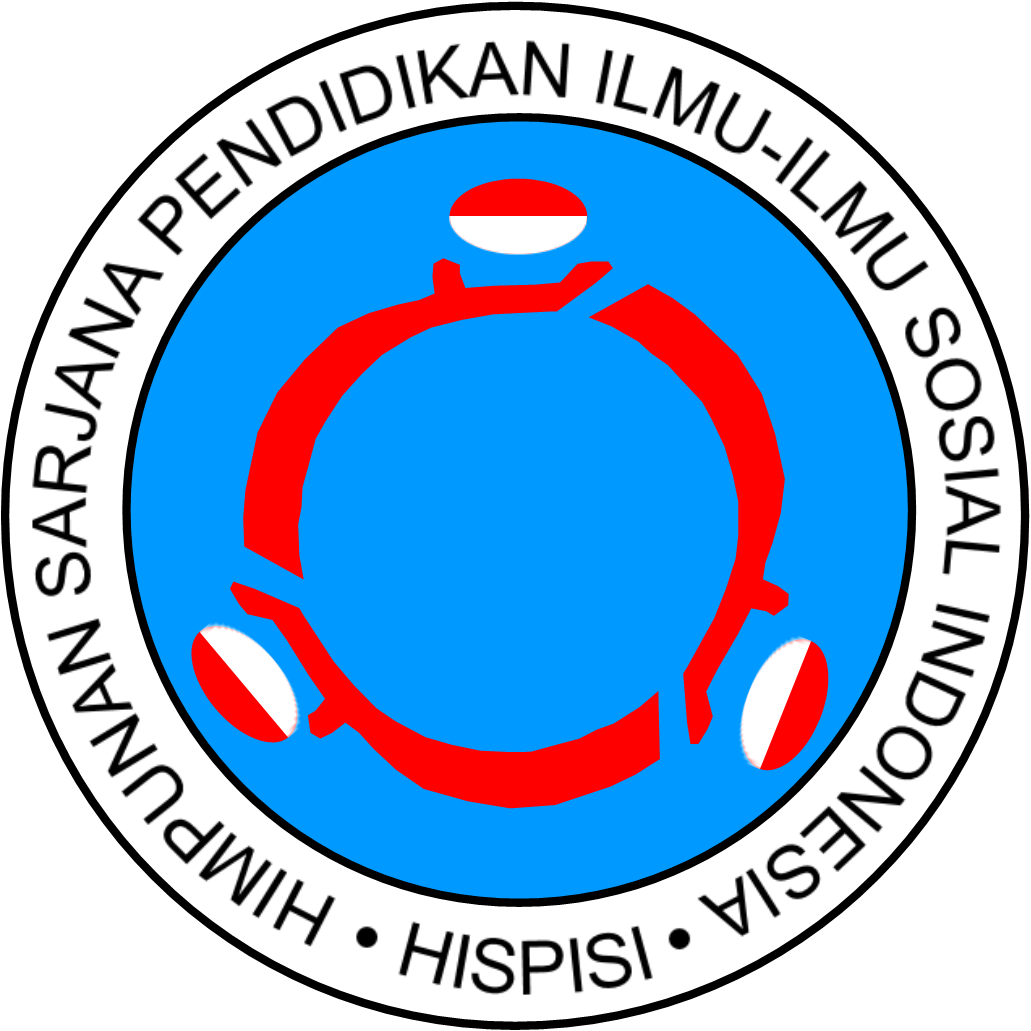Mapping the Potential and Risk of a Tsunami Disaster in Pangandaran with Socio-Spatial Analysis Emphasizes
Abstract
Keywords
Full Text:
PDFReferences
Abe, T., Goto, K. and Sugawara, D., 2020. Spatial distribution and sources of tsunami deposits in a narrow valley setting - insight from 2011 Tohoku-oki tsunami deposits in northeastern Japan. Prog Earth Planet Sci 7, 7. https://doi. org/10.1186/s40645-019-0318-6
Baba T, Allgeyer S, Hossen J, Cummins PR, Tsushima H, Imai K, Yamashita K, Kato T (2017) Accurate numerical simulation of the far-field tsunami caused by the 2011 Tohoku earthquake, including the effects of Boussinesq dispersion, seawater density stratification, elastic loading, and gravitational potential change. Ocean Model 111:46– 54. https://doi.org/10.1016/j.ocemod.2017.01.002
Badan Nasional Penanggulanagan Bencana Republik Indonesia. Buku Risiko Bencana Indonesia. Karnawati, D. 2023.
Djati Mardiatno, M.N. Malawani, Ratri Ma'rifatun Nisaa', The future tsunami risk potential as a consequence of building development in Pangandaran Region, West Java, Indonesia, International Journal of Disaster Risk Reduction, Volume 46, 2020, 101523, ISSN 2212- 4209, https://doi.org/10.1016/j.ijdrr.2020.101523.
Faiqoh I, Gaol J. L. and Ling M. M. 2014 Vulnerability Level Map of Tsunami Disaster in Pangandaran Beach, West Java Int. J. Remote Sens. Earth Sci. 10 90-103
Fritz, H. M., Borrero, J. C., Synolakis, C. E., and Yoo, J.: 2004 Indian Ocean tsunami flow velocity measurements from survivor videos., Geophys. Res. Lett., 33, L24605, doi:10.1029/2006GL026784, 2006.
Goda, K., Song, J. Uncertainty modeling and visualization for tsunami hazard and risk mapping: a case study for the 2011 Tohoku earthquake. Stoch Environ Res Risk Assess 30, 2271– 2285 (2016). https://doi.org/10.1007/s00477-015-1146-x
Husa, N., & Damayanti, A. (2019). Evacuation route and evacuation shelter planning for tsunami hazard in Pangandaran District. IOP Conference Series: Earth and Environmental Science, 311(1), Article 012023. https://doi.org/10.1088/1755-1315/311/1/012023
Ikhsanti, H., Saraswati, R., & Sri Rahatiningtyas, N. (2020). Modelling Tsunami Level of Hazard in Pariaman Coastal Area, West Sumatera. E3S Web of Conferences, 202, Article 13005. https://doi.org/10.1051/e3sconf/202020213005
Mardiatno, Djati & Malawani, Mukhamad & Nisa, Ratri. (2020). The future tsunami risk potential as a consequence of building development in Pangandaran Region, West Java, Indonesia. International Journal of Disaster Risk Reduction. 46. 101523. 10.1016/j.ijdrr.2020.101523.
Martha Alvianingsih et al 2021 IOP Conf. Ser.: Earth Environ. Sci. 925 012037. DOI 10.1088/1755-1315/925/1/012037
Mori, J., Mooney, W. D., Afnimar, Kurniawan, S., Anaya, A. I., & Widiyantoro, S. (2007). The 17 July 2006 Tsunami earthquake in West Java, Indonesia. Seismological Research Letters, 78(2), 201–207. https://doi.org/10.1785/gssrl.78.2. 201
Pranantyo, I.R., Heidarzadeh, M. & Cummins, P.R. Complex tsunami hazards in eastern Indonesia from seismic and non-seismic sources: Deterministic modelling based on historical and modern data. Geosci. Lett. 8, 20 (2021). https://doi.org/10.1186/s40562- 021-00190-y
Priadi, R., Yunus, D., Yonanda, B. and Margiono, R. (2020) “Analysis of Tsunami Inundation due in Pangandaran Tsunami Earthquake in South Java Area Based on Finite Faults Solutions Model”, Jurnal Penelitian Fisika dan Aplikasinya (JPFA), 10(2), pp. 114–124. doi: 10.26740/jpfa.v10n2.p114-124.
Reese, S., Cousins, W. J., Power, W. L., Palmer, N. G., Tejakusuma, I. G., & Nugrahadi, S. (2007). Tsunami vulnerability of buildings and people in South Java - Field observations after the July 2006 Java tsunami. Natural Hazards and Earth System Science, 7(5), 573–589. https://doi.org/10.5194/nhess-7-573-2007
Riyanto, A. M., Muslim, D., Yulianto, E., Krisnabudhi, A., & Firmansyah, F. (2023). Discerning geomorphological aspects of tsunami risk in Pangandaran, West Java, Indonesia. Riset Geologi Dan Pertambangan, 33(1). https://doi.org/10.55981/risetgeotam.2023.1247
Rubin CM, Horton BP, Sieh K, Pilarczyk JE, Daly P, Ismail N, Parnell AC (2017) Highly variable recurrence of tsunamis in the 7,400 years before the 2004 Indian Ocean tsunami. Nat Commun 8(1), https://doi.org/10.1038/ncomms16019
S. L. Soloviev and C. N. Go, A catalogue of tsunamis on the western shore of the Pacific Ocean (173-1968), Moscow: Nauka Publishing House, 1974.
Setyaningsih, D. P., Ery, H., Sutiono, C. P., Rizki, A., Paramanandi, G., Khasanah, E. U., Wahyuni, T., Aurora, B., Jati, E. K., Falakh, M., Akbar, A., Widyatmanti, W., & Wibowo, T. W. (n.d.). TSUNAMI HAZARD MODELING IN THE COASTAL AREA OF KULON PROGO REGENCY. In International Journal of Remote Sensing and Earth Sciences (Vol. 19). https://earthexplorer.usgs.gov/
Synolakis CE (1991) Tsunami runup on steep slopes: How good linear theory really is. In: Tsunami Hazard, Springer, pp 221–234, https://doi.org/10.1007/978-94-011-3362-3_8
Takagi H, Pratama MB, Kurobe S, Esteban M, Aránguiz R, Ke B (2019) Analysis of generation and arrival time of landslide tsunami to Palu City due to the 2018 Sulawesi earthquake. Landslides 16(5):983–991.https://doi.org/10.1007/s10346-019-01166-y
W Windupranata et al 2020 IOP Conf. Ser.: Earth Environ. Sci. 618 012026
Yusdian, Mauliza & Eko Prasetiyo, Riyan & Supriyadi, Asep & Prihanto, Yosef.
(2023). Tsunami Disaster Modeling For Non-Military Defense In Pangandaran Regency Using Geographic Information Systems. 45-57. 10.30536/j.ijreses.2023.v20.a3842.
DOI: https://doi.org/10.17509/jpis.v33i2.82205
Refbacks
- There are currently no refbacks.
Copyright (c) 2025 Universitas Pendidikan Indonesia (UPI)

This work is licensed under a Creative Commons Attribution-ShareAlike 4.0 International License.














